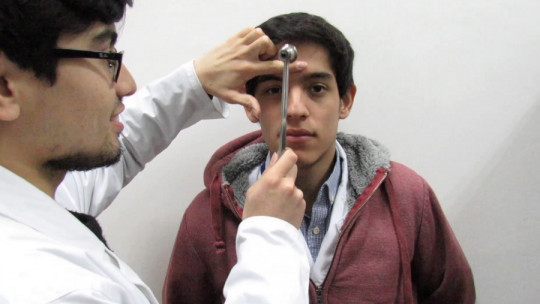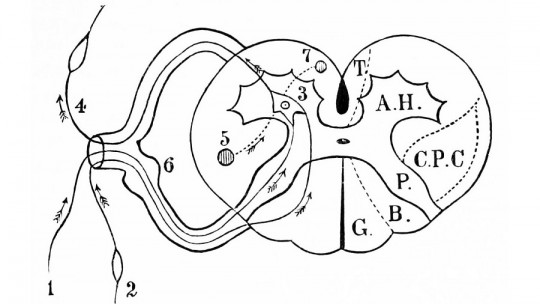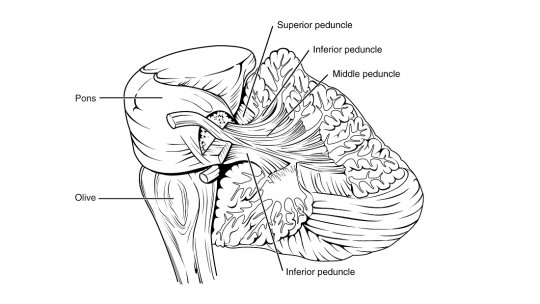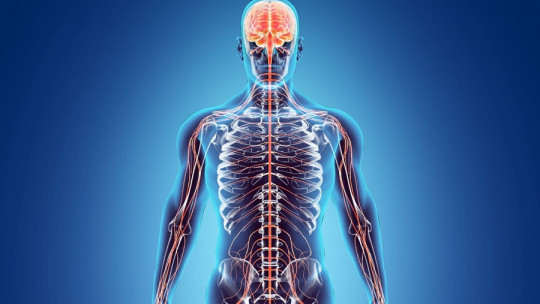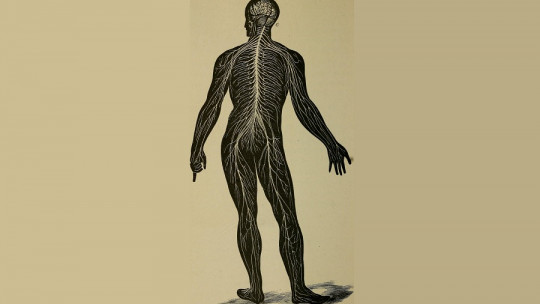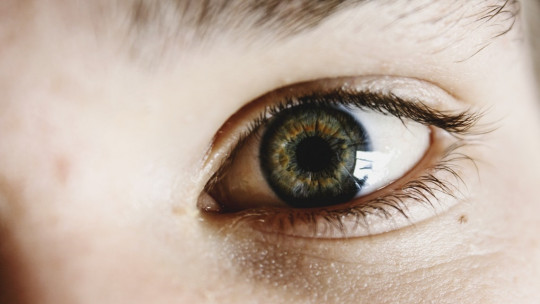Reflexes are quick reactions that occur when coming into contact with a specific stimulus, or in a specific way. The glabellar reflex is one of these reactions that do not involve in any measure the higher functions of consciousness. Let’s see what it is like.
What is the glabellar reflex?
As with all reflexes, the glabellar reflex is a process in which The sensory neuron carries the impulse directly to the motor neuron which is responsible for immediately sending the response to a muscle, which executes the action of the reflex act.
This reflection happens when the center of the forehead is repeatedly hit a little above where the nose ends, so that the eyes cannot come into contact with the examiner or with the object that hits said area.
Once the glabellar area is hit, as described above, briefly but forcefully, the glabellar reflex occurs, which consists of a constant and abnormal blinking on the part of the tested subject
What nerve does this reflex involve?
During this reaction, the trigeminal nerve, which is the V cranial nerve, is mobilized. This nerve is located in the pons of the brain stem, and From there it extends to the Gasser’s Ganglion This ganglion is the largest sensory root, and is located in the middle cranial fossa, from there, its neuronal bodies are divided into three parts: The ophthalmic branch (V1), the maxillary branch (V2), and finally, the mandibular branch (V3).
Depending on which branch is stimulated, through contact or a visual stimulus we can observe a different reflection in the eyes or in some area of the subject’s face.
When testing the area of the forehead above the nose (glabellar area), with the tapping and the form described above what we are doing is stimulate the ophthalmic branch (V1) of the Gasserian ganglion which is linked to the trigeminal nerve (V cranial nerve).
All of these connections must be functioning properly for the reflection to occur; if there is any interference or anomaly at any point, then the synapse would not be able to occur properly.
Therefore, the afferent neuron of this reflex, which belongs to the facial nerve (cranial nerve III) would not send any signal to the muscle for it to move, and the reflex would not occur. Taking into account that the III cranial nerve (facial nerve) also intervenes in this reflex, through the efferent neuron, then it is understood that the reflex of the glabellar area It is of trigeminal-facial origin
The importance of this physiological phenomenon
This reflex is essential to protect against exaggerated stretching of the muscles, in this case the muscles of the eyelids. The reflection of the glabellar area is responsible for preventing the eyelids from being damaged and in turn this represents important protection for the eyes.
This assessment is really simple for the examiner to perform as it is non-invasive. It is part of the person’s routine physical examination, and allows to detect with great accuracy if there is any damage to the spinal cord
Medical evaluation
The examiner should be attentive to the reflex response in both eyelids; if it happened that the flicker is not symmetrical on both sides, then is an indicator of neurological damage If so, it will be necessary to determine where the damage is located exactly, whether in the afferent or sensory pathway, in the reflex processing center (interneuron), the efferent or motor pathway, or in the effector muscle.
For the evaluation of this reflex to be carried out satisfactorily, it is necessary that the person evaluated be in a state of complete muscle relaxation. Otherwise the muscle will not react to the stimulus in the expected way.
Sometimes It is difficult for the evaluator to make the patient relax as necessary To apply the evaluation method, when these complications occur, a series of techniques can be used to achieve the appropriate state of relaxation in the subject.
Examples of techniques
Some of these techniques are the following.
1. Use the Jendrassik maneuver
This procedure helps to obtain the reflex action through sudden movements in the area where the response is sought.
For example, in the case of the glabellar area, the examiner will ask the subject to blink rapidly before proceeding to the evaluation
2. Relaxation techniques
It is convenient to use them before applying sudden percussion to the muscle tendon.

